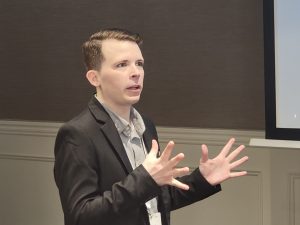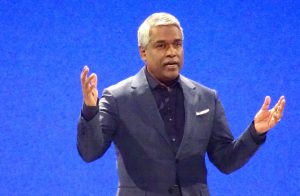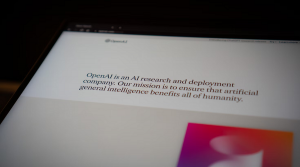Consolidating SAP over Oracle Boosts Business Value Delivered by IT, Says Wikibon CTO David Floyer
David Floyer, Co-founder and CTO of Wikibon, addressed the business value conversation around SAP, HANA, consolidation on top of Oracle with theCube host John Furrier, live from the Sapphire Now conference.
![]()
Analyzing major trends such as software-led infrastructure, consolidation and virtualization, the Wikibon recent research took a look at the value of consolidation of Oracle, and of SAP as an application on top of Oracle. “We talked to SAP customers and looked at how they’ve gone about the consolidation and vitualization of SAP. We’ve looked at the business of it” and the technology they used, Floyer said.
Asked of the business reasons for migrating to such a consolidated environment, Floyer said that the business value is so high, companies are pushing IT to implement such a virtualized solution as soon as possible. He gave the example of West Pharmaceutical, which had accomplished this in only 6 months, an impressively short period of time for such a big project. EMC also managed to switch to such a virtualized solution in 27 months, which is still a great turnaround time.
Companies are creating a single version of SAP, integrating all divisions or all different countries, or both (in the case of EMC), and “putting on to them a single version of the financial and operating environment that SAP is giving them.” It offers a single backlog, which allows easier use of data and involves less people to move data from one place to another.
The research on this topic, Floyer said, is applied to Wikibon members. The purpose is to help them look at the reasons they would want to create a single platform, the technology involved, and which are the best practices.
Consolidate SAP itself into a single, global instance
The key, Floyer explained, was consolidating SAP itself into a single global instance, or reducing the number of instances very significantly, as well as virtualizing through a consolidated infrastructure. For a single instance of an SAP environment, there is not a big business value, But for SAP environments that have been growing over time – using different SAP versions – bringing them together “makes both IT and business sense”. Consolidating makes things simpler and faster.
3 ways to measure savings in IT infrastructure
As far as savings are concerned, Wikibon looked at three areas – IT value, the low end of the IT and business value, and the higher end of business value. When it comes to IT value, the biggest single cost for a company is the Oracle licensing. “By going towards a virtualized infrastructure, you can optimize the environment,” thus reducing the hardware and Oracle costs, as well as the people cost. The SAP cost is only slightly reduced. Oracle and operational savings are the most significant. The payback period would be 2 years.
![]()
At the lowest level of savings for the business, the business benefits are generated by lower numbers of people – financial analysts – involved, which leads to operational efficiency on the business side.
At the high end value, the true benefit for businesses is generating revenue growth. Their objective of doing this exercise was to increase revenue from 1.2 to 1.4 billion while keeping their people cost at the same level. The business benefit, the value of the investment, includes revenue, “you are able to run the business on a faster turnover cycle, knowing the financial aspect.” It provides execution efficiency and increased revenue. There are very significant increases, but they do not happen on day one, Floyers warned. The significant returns on investments explain why people want to implement this model as quickly as possible.
Discussing the business benefits of HANA, Floyer said it enables company to make decisions in real time based on SAP data, while it used to take 20-30 days. “25 seconds from 25 days.” The real reason to implement it is not the savings, it’s because you can make everything faster, as there’s lest testing involved.
Where & why to invest in IT
Asked what CIOs are interested in regarding IT investments, Floyer said that “they want to reduce the complexity of the IT systems.” One of the areas that is hidden, he added, is that things like flash are a key component to putting everything in one system. They also want to reduce the complexity of their infrastructure and “remove the applications that are not adding value.” CIOs are also looking for ways that they can use to put stuff out into the cloud. It makes more sense to have assets in the cloud, especially if you’re analyzing data that comes from the Internet.
The reason for CIOs accelerating IT investments, Floyer stated, was that having an infrastructure that can change faster, deal with a single instance and analyze far greater amounts of data, allowed companies to improve the value they delivered to the business from IT.
Hyperscale, flash and software-led infrastructure can improve by 20- to 30 percent the productivity of a company, and help it find new ways to do business. Floyer gave an example of a public transportation system that was now making money from selling advertisements to riders. They had used the infrastructure to create a new stream of revenue.
A message from John Furrier, co-founder of SiliconANGLE:
Your vote of support is important to us and it helps us keep the content FREE.
One click below supports our mission to provide free, deep, and relevant content.
Join our community on YouTube
Join the community that includes more than 15,000 #CubeAlumni experts, including Amazon.com CEO Andy Jassy, Dell Technologies founder and CEO Michael Dell, Intel CEO Pat Gelsinger, and many more luminaries and experts.
THANK YOU













